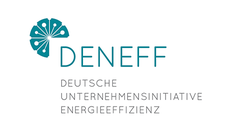Search eceee proceedings
Machine tools: 12 points – catching complexity in ecodesign
Panel: 1. Policies and programmes to drive transformation
This is a peer-reviewed paper.
Authors:
Tim Hettesheimer, Fraunhofer Institute for Systems and Innovation Research, Germany
Paul Waide, Waide Strategic Efficiency, United Kingdom
Clemens Rohde, Fraunhofer Institute for Systems and Innovation Research ISI, Germany
Abstract
The saving potentials from the adoption of appropriate Ecodesign technologies have been shown to be significant; however, due to the increasing share of complex products or product systems in the Ecodesign work plan, the process of deriving prospective Ecodesign and Energy Labelling requirements is becoming progressively more challenging. Such complex products, as for example machine tools, are characterized by a high degree of heterogeneity and multiple functional units. A machine tool can thereby be defined as a fixed powered tool for cutting or shaping metal, wood, or other material. This could be for example a simple and small lathe or drilling machine as well as a large-scale and highly automated multi-spindle machine, which combines various technologies in one. In order to assess these complex products with regard to their potential benefits from Ecodesign and Energy Labelling requirements, this paper proposes a “points-system” based methodology that could be applied to the development of Ecodesign requirements for complex products and/or product systems. This approach has been elaborated for the European Commission within a technical assistance study. The starting point was a review and assessment of existing methods (for example LCA ISO 14040 and 14044, STRES, BREEAM, LEED, ...) and their potential applicability for adaptation and use in the appraisal of Ecodesign requirements for complex products. Based on the findings a generic method consisting of 9 steps was developed. After defining a generic Ecodesign points-system approach for complex products the methodology was applied to the specific case of machine tools. This case is especially challenging, not only because of the complexity of the products but also because of the problem of defining a suitable reference system as benchmark. So far, some attempts have already been made without fully meeting the requirements for a reference system. This paper demonstrates a methodological approach which enables this basic problem to be solved and a reference system defined regardless of the complexity of the specific machine tool being addressed. The methodology is applied to hypothetical machine in order to illustrate it. The main insights from this evaluation process and shared before the paper closes with a discussion of the benefits and boundaries of a “points system” approach for machine tools.
Errata
Table 8 and the associated text have been updated in the online version of the paper.
Downloads
Download this paper as pdf: 1-088-18_Hettesheimer_rev.pdf
Download this presentation as pdf: 1-088-18_Hettesheimer_pres.pdf















